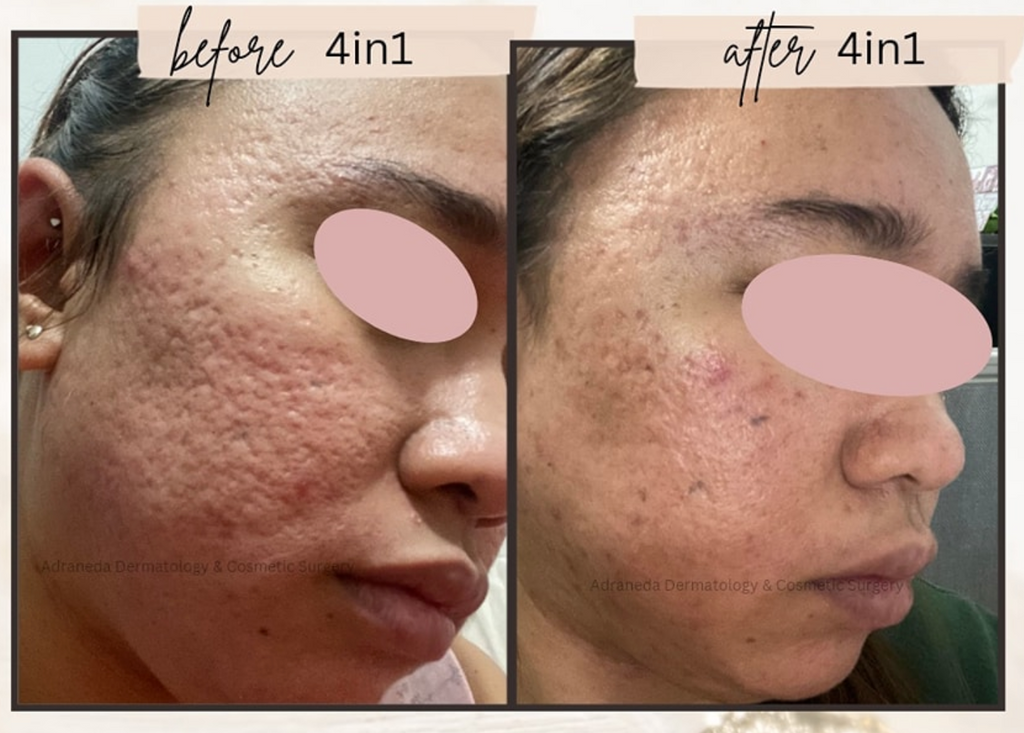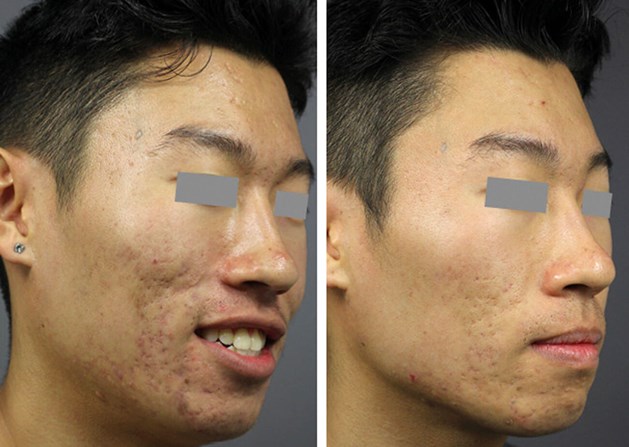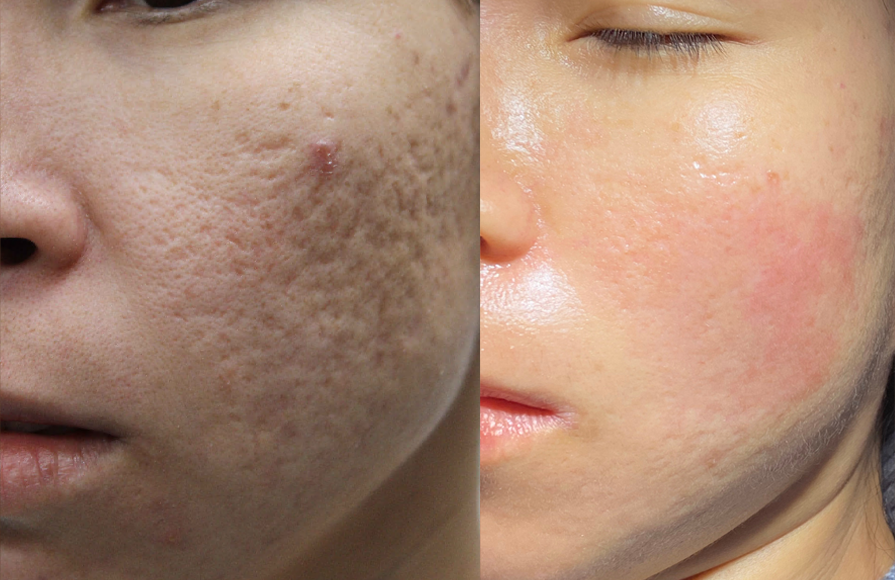Comprehensive Acne and Acne Scars Treatment: Recover Your Skin's All-natural Beauty
Comprehensive Acne and Acne Scars Treatment: Recover Your Skin's All-natural Beauty
Blog Article
Recognizing the Different Skin Disease and Reliable Treatment Options for Acne Scars
Acne marks represent an intricate interplay of skin conditions that substantially influence individuals' self-esteem and general skin health and wellness. Comprehending the distinctive types of acne scars-- hypertrophic and atrophic-- alongside their underlying causes, is crucial for identifying reliable therapy techniques. Numerous restorative alternatives exist, ranging from innovative dermatological procedures to all-natural remedies. The efficiency of these therapies frequently hinges on personalized evaluations by qualified professionals. As we discover the landscape of acne scar administration, it becomes obvious that the journey towards clearer skin might entail even more than simply topical remedies.
Kinds Of Acne Marks

On the other hand, hypertrophic scars arise from an overproduction of collagen during the recovery process, leading to elevated areas on the skin. These marks are often firm and can differ in shade, in some cases showing up red or darker than the surrounding skin.
Understanding these sorts of acne marks is crucial for creating an effective therapy strategy - acne scars treatment. Choices might include chemical peels, laser treatment, microneedling, or facial fillers, customized to the details mark kind. A thorough consultation with a dermatologist can help identify one of the most proper intervention, thinking about the individual's skin type, scar intensity, and overall skin wellness
Root Causes Of Acne Scarring
Scarring takes place as an outcome of the body's all-natural recovery action to inflammation and injury triggered by acne lesions. When acne types, it activates an inflammatory response, causing the launch of various cytokines and growth aspects that advertise recovery. However, this process can occasionally result in extreme cells formation or insufficient repair, leading to scars.
The key reasons for acne scarring consist of the intensity of the acne itself, duration of the sores, and individual skin types. Severe inflammatory acne, such as cysts and blemishes, is more probable to result in scarring due to much deeper cells damages. In addition, inappropriate handling of acne sores, such as picking or pressing, can intensify cells injury and inflammation, enhancing the possibility of scarring.
Genetic tendency also plays a significant role; people with a household background of scarring go to a greater danger. In addition, skin kind and shade can influence scar formation, as darker skin tones might experience post-inflammatory hyperpigmentation, while lighter skin may create atrophic scars.
Ultimately, understanding these reasons is crucial in taking care of acne and reducing the capacity for scarring.

Therapy Choices for Scarring
Reliable treatment choices for acne scarring differ depending upon the kind and seriousness of the scars. Usually classified right into atrophic, hypertrophic, and keloid marks, these conditions require customized strategies for optimal outcomes.
For atrophic scars, which are defined by a loss of tissue, treatments such as chemical peels, microdermabrasion, and laser therapy are typically employed. These techniques advertise skin revival and stimulate collagen production, thereby improving skin structure. Subcision, a minimally invasive treatment, can also be reliable by breaking up fibrous straight from the source bands under the skin.
Keloid and hypertrophic marks can be more testing to treat. Choices include corticosteroid injections to reduce swelling and flatten the scars. In many cases, cryotherapy or laser therapy may be suggested to minimize their look.
Surgical options are readily available for severe scarring, where excision or skin grafting may be essential. It's essential for individuals to speak with a dermatologist to analyze their specific mark type and discuss one of the most appropriate therapy strategy. Incorporating numerous therapies commonly generates the most effective outcomes, guaranteeing that each client's one-of-a-kind skin problem is resolved successfully.
Natural Home Remedy and All-natural Solutions
Natural services and home solutions can give an obtainable technique for individuals seeking to boost the look of acne marks (acne treatment for sensitive skin). Various components found in the home kitchen area have demonstrated possible benefits in enhancing skin structure and promoting recovery

Another efficient option is lemon juice, which serves as an all-natural exfoliant and can lighten hyperpigmentation. It needs to be utilized very carefully, as it may create photosensitivity. Oat meal masks are likewise advantageous; their mild peeling can assist get rid of dead skin cells while calming inflammation.
Necessary oils, such as tea tree oil and lavender oil, can even more support scar healing because of their antimicrobial homes. It is important to perform a patch test prior to applying any remedy to guarantee there are no negative reactions. These natural solutions can be a complementary method in the trip to reduce acne marks.
Protecting Against Future Scarring
Embracing an aggressive technique to skin care can substantially Visit Website reduce the threat of creating future acne scars. Regular cleansing, peeling, and hydration can assist keep skin health and prevent blocked pores.
Furthermore, staying clear of the temptation to squeeze or select acne sores is critical, as this can result in swelling and subsequent scarring. Rather, people need to concentrate helpful site on using topical treatments that promote recovery and decrease inflammation. Ingredients such as salicylic acid, benzoyl peroxide, and retinoids are understood for their effectiveness in managing acne and lessening scars.
Sun defense is one more vital element; direct exposure to UV rays can hinder and dim scars recovery. Consequently, making use of a broad-spectrum sun block daily can minimize these effects - acne scars treatment.
Finally, maintaining a healthy and balanced diet rich in antioxidants and staying hydrated supports skin regrowth. By applying these precautionary measures, people can significantly decrease their risk of future scarring and promote overall skin health.
Final Thought
In conclusion, an extensive understanding of acne marks, including both atrophic and hypertrophic kinds, is important for efficient therapy strategies. Tailored interventions, consisting of expert therapies and home treatments, can considerably boost skin look and texture. Precautionary measures additionally play a vital function in reducing future scarring. Assessment with a skin specialist remains critical to develop individualized techniques that consider individual skin kinds and scar intensity, eventually improving the effectiveness of mark administration techniques.
Acne scars stand for a complex interaction of skin problems that considerably effect individuals' self-esteem and overall skin health and wellness. The two primary groups of acne marks are atrophic and hypertrophic marks. These marks are more categorized right into three subtypes: ice pick scars, which are slim and deep; boxcar marks, which are wider and have well-defined edges; and rolling scars, which develop a wave-like look due to irregular skin appearance.
A thorough appointment with a skin doctor can help identify the most suitable intervention, taking into account the individual's skin kind, mark intensity, and overall skin health and wellness.
Consultation with a skin specialist stays critical to design individualized approaches that consider individual skin kinds and mark seriousness, ultimately boosting the effectiveness of scar monitoring strategies.
Report this page